Case Study: Make Sure Taxes Don't Destroy Your Legacy on Death
Jim and Jane both recently retired are enjoying the fruits of their labour. They love to spend time with their children, grandchildren, family and friends. Their hobbies include gardening, golf, tennis and travel (not right now due to COVID-19). Additionally, they love a low key night in together to watch movies and talk with each other about the future. Now that they are retired, they have become increasingly focused on their legacy and the transfer of wealth that’ll come along with it. Jim and Jane want to first take care of themselves and then efficiently transition whatever is left over to the next generation. Their primary area of concern is the amount of tax they’d be liable for on the death of the second spouse.
Tax Relief Opportunities for Spouses
You see, Jim and Jane are fully aware of the tax relief available to them on the death of the first spouse. In Canada, when the first spouse dies, the Income Tax Act (ITA) allows for the opportunity to rollover assets into the surviving spouse's name on a tax deferred basis.
What occurs is the surviving spouse (assuming they’ve made the proper elections) can receive the non-registered assets at the original adjusted cost base (ACB) and registered money can transfer into their name without triggering a taxable withdrawal. The result is a tax deferral opportunity where no taxes are payable immediately on the passing of one’s spouse. This works for assets in RRSPs, spousal RRSPs, RRIFs, spousal RRIFs, TFSAs, shares in private businesses, non-registered assets, etc. It’s a great benefit for the surviving spouse, but it does create future tax consequences on the death of the second spouse.
The Tax Consequences of Wealth Transfer
Now that you are familiar with the tax relief available to spouses, let’s review the tax consequences on the death of a single person/widow(er).
You’ll hear plenty of individuals in the field of estates loudly proclaim that Canada doesn’t have an estate tax, and while that’s technically true, perhaps it’s a more semantic argument than anything else. Because in Canada there are significant tax consequences that occur on the passing of a single person/widow(er).
First, when a single person/widow(er) dies, the ITA deems all of their personally held capital property (real estate, business interests, securities, and registered plans) to have been sold or liquidated in the seconds prior to death.
To make this example more concrete let’s use a simple three asset scenario (principal residence, RRSP and single stock holding in a non-registered account). Here’s the data on the assets; the principal residence has a fair market value of $500,000 and an ACB of $100,000. The RRSP has a fair market value of $750,000 and the stock holding has a market value of $100,000 and an ACB of $20,000.
Below you’ll find a table that lists the ACB, the FMV and the taxable gain/income due on the final tax return of the deceased person.
|
Asset |
Adj. Cost Base (ACB) |
Fair Market Value (FMV) |
Capital Gain |
Taxable Gain/Income Due on Final Tax Return |
|
Principal Residence |
$100,000 |
$500,000 |
$400,000 |
$0 |
|
RRSP |
N/A |
$750,000 |
0 |
$750,000 |
|
Single Stock Holding |
$20,000 |
$100,000 |
$80,000 |
$40,000 |
|
Totals |
|
$1,350,000 |
$480,000 |
$790,000 |
I’d like to highlight a few key figures in the table above and then address the ultimate tax consequence of this estate assuming no personal income was earned in the year of death other than the assets shown.
The fair market value (pre-tax) of the estate is $1,350,000 and the income needing to be reported on the final tax return is $790,000. That means that our deceased friend will owe taxes as if they earned $790,000 of personal income in the year they passed away. The income tax liability as of 2020 on $790,000 of personal income is $384,461 according to the Ernst and Young 2020 Personal Tax Calculator for Ontario. Therefore, the after tax estate value is $1,350,000 - $384,461 = $965,539. Additionally, the income tax ratio payable by this person is 28.47% (384,461/1,350,000). The reason that I use $1,350,000 as the denominator is that the $400,000 capital gain on the sale of the principal residence is income, however, the ITA offers tax relief on gains earned on your principal residence making that income tax free, provided the taxpayer is eligible to designate all years of ownership as the principal residence.
To make matters even more fascinating, income tax is not the only tax due on death. There are also probate fees payable in most provinces. The probate fee is payable by the estate to validate the last will and testament of the deceased individual. In Ontario, the probate fees are $0 for the first $50,000 of estate assets and $15 per $1,000 of the fair market value of estate assets greater than $50,000 (or simply 1.5%), according to the Ontario Ministry of Justice. In our example above let’s assume that all the assets are left to the estate and no beneficiary designation was made on the RRSP.
The estate would then be liable for probate fees equivalent to $19,500 ($1,350,000 FMV at death - $50,000 = $1,300,000 x 1.5% = $19,500) and the probate fee ratio is 1.44% ($19,500 / $1,350,000) of the after tax estate value. The total tax and fees (income + probate) payable for this person would be equivalent to $403,961 ($384,461 + $19,500) or 29.92% of the pre-tax estate value.
As you can see, CRA is your financial partner all the way through this game called life.
Current Planning Opportunities
Now that you know the high level tax implications that are going to impact your wealth transfer plan (terminal income tax and probate tax), I think it’s important that you define a few important planning items.
- Estimate your estate tax liability
Work with your wealth transfer team (tax professional, wealth advisor, insurance professional and lawyer) or individually to estimate your pre and post-tax estate values. You’ll gain insight into your wealth transfer tax liability and the net estate remaining for your beneficiaries. Once you are aware of the pre and post-tax figures, you need to be clear with yourself whether you are happy with the numbers. If you are, that’s awesome, you are now aware of your situation, you’ve made a decision and you can move forward confidently.
If however, you aren’t comfortable with the amount of your estate that will be lost to income and probate taxes on your death, it’s important for you to explore your options. - Make sure to designate beneficiaries or successor annuitants where appropriate
This simple adjustment can save you significant estate probate fees.
Insurance policies, and registered plans (RRSPs, RRIFs, spousal RRSPs/RRIFs, and TFSAs) can have designated beneficiaries, or successor holder annuitants. Meaning, you can name the individual(s) that you’d like to receive the insurance policy death benefit or the proceeds from your registered plans on your death. The funds will flow outside of your estate and directly to your named beneficiaries. In the example above, this could’ve saved $11,250 in probate fees payable.
Tip for spouses: If you want your current spouse to inherit your RRIF, ensure they are a designated as a successor annuitant, not a designated beneficiary. There are administrative advantages to this election. In addition, if you want your current spouse to inherit your TFSA and continue the tax-free status of the account, ensure they are a successor holder, not a designated beneficiary.
Be mindful though, designating beneficiaries can create additional wealth transfer challenges. If you aren’t aware of the consequences of naming beneficiaries on your registered plans, review the pros and cons of beneficiary designations with your wealth transfer team. - Review the cost and benefits of life insurance to cover your future tax liability
Life insurance can be an incredibly attractive way to leave a larger net estate value to your loved ones. In plenty of circumstances, you can take out a life insurance policy for the tax liability you’ve forecasted you’ll owe (in the above case $400,000) and you are likely to spend less in insurance premiums than the death benefit your beneficiaries will receive. The effect of this would be to leave a larger net estate value to your beneficiaries.
You’ll want to review the cost benefit analysis of life insurance with a licensed insurance advisor. If you are interested in this option, you can reach out to me directly and I’d be happy to walk you through the analysis and your options. - Personalized planning on demand
The last planning opportunity I’m going to leave you with is the opportunity to review your personal wealth transfer plan with your trusted advisor. This is a cornerstone offering provided by many financial advisors. What you’ll do is come up with a comprehensive plan tailored to your specific situation and needs. You’ll engage with your advisor in an in-depth review of your current assets, liabilities, registered investments and life insurance policies. In this way, you’ll gain a complete understanding of your financial situation, and the tax consequences of your current decisions. Additionally, you can walk through what your wealth transfer plans are and whether your current setup is going to deliver what you expect.
To Wrap Up
You likely clicked on this post because you are interested in how your money will be distributed when you pass away. I hope that you now understand the tax relief available to spouses, and at a high level, the tax consequences that’ll impact a single person(s) or widow(er)s. I think it’s clear that CRA is going to be your financial partner throughout life, but with a bit of forethought and some prudent planning you can optimize the amount you leave to your loved ones and important causes.
If you are interested in receiving your complimentary 20 minute discussion about your current wealth transfer plan, email me right now at kurt.lucier@raymondjames.ca with the subject line WEALTH TRANSFER PLAN MEETING and a few lines about you and your current circumstances. I’ll respond to you within 24 business hours to arrange a call or a zoom video to discuss your situation and get you on track.
I look forward to hearing from you.
Sincerely,
Kurt Lucier, CFA
Information in this article is from sources believed to be reliable. However, we cannot represent that it is accurate or complete. It is provided as a general source of information and should not be considered personal investment advice or solicitation to buy or sell securities. The views are those of the author, Kurt Lucier, and not necessarily those of Raymond James Ltd. Investors considering any investment should consult with their investment advisor to ensure that it is suitable for the investor’s circumstances and risk tolerance before making any investment decision. Raymond James Ltd. is a Member Canadian Investor Protection Fund.




